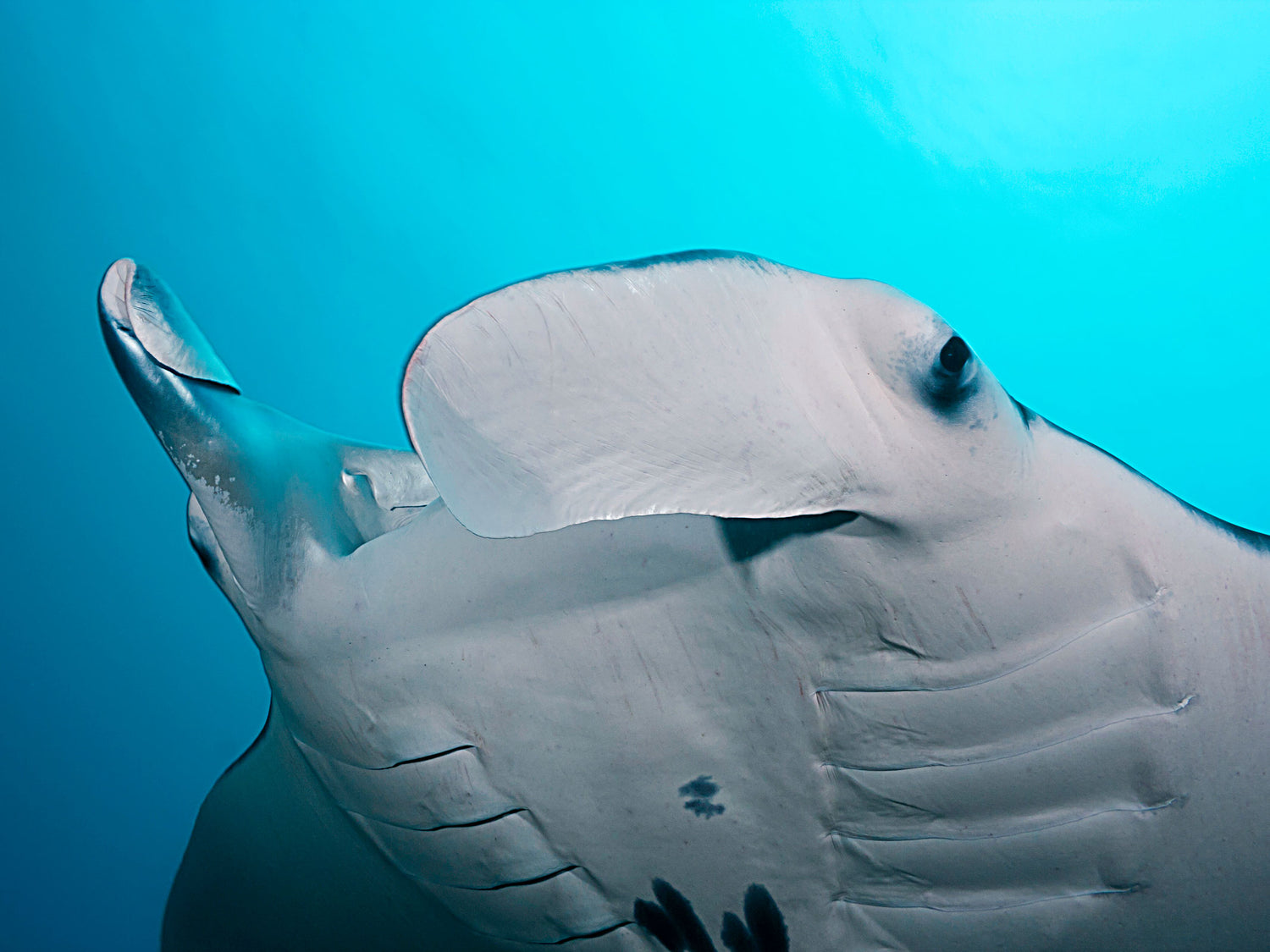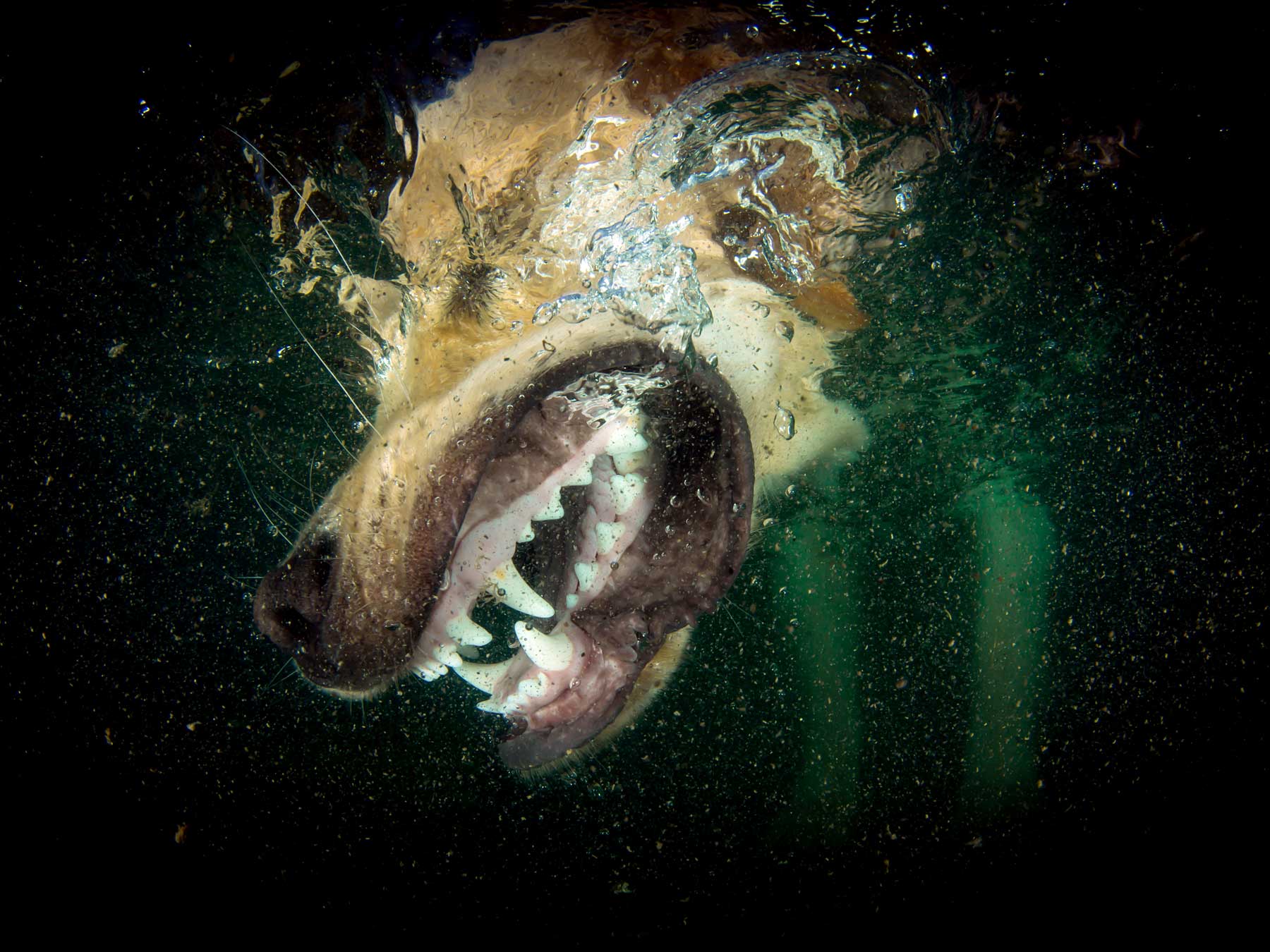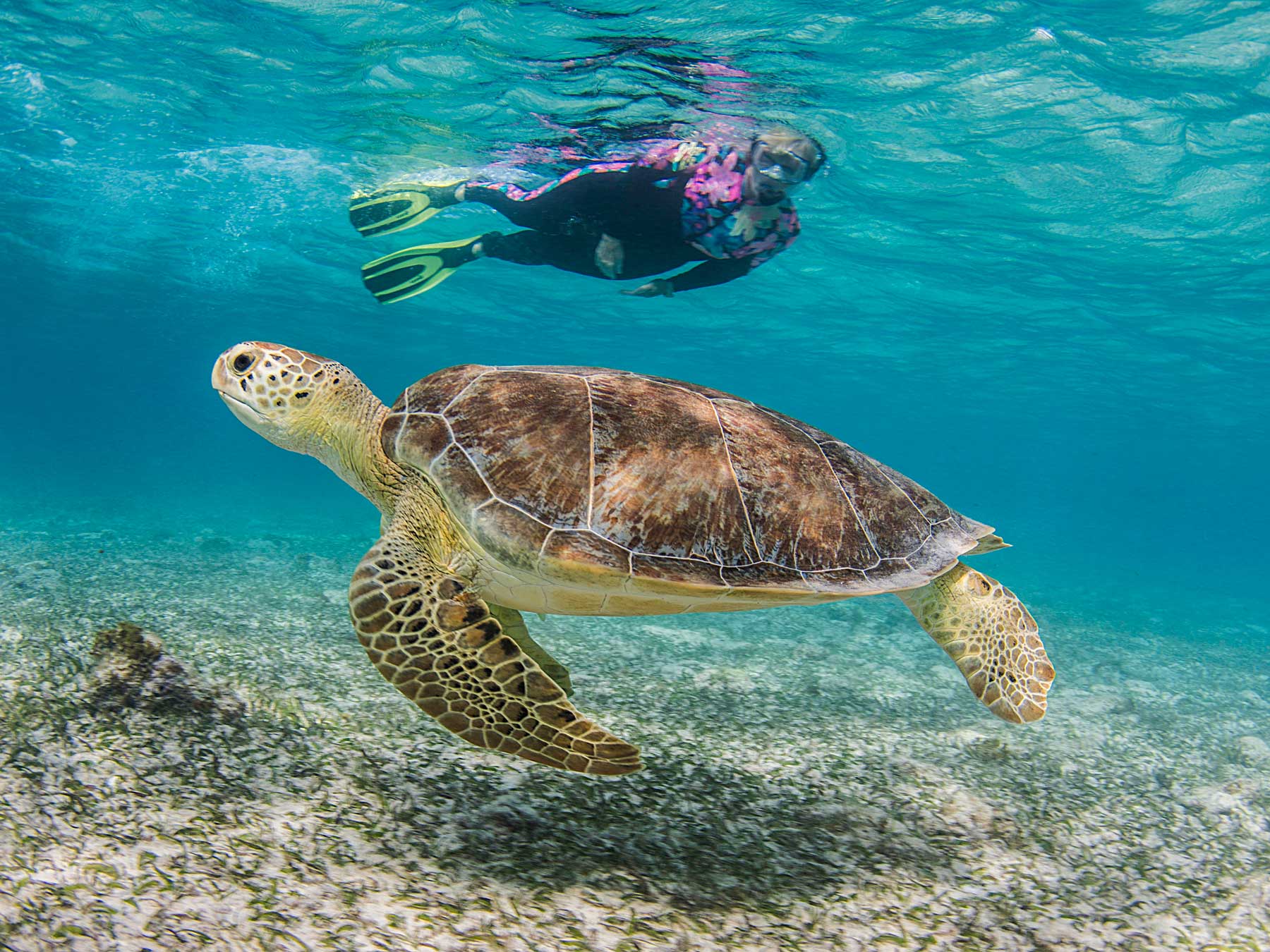By Ambassador David Fleetham
Yap is part of the Federated States of Micronesia and the Yapese people's indigenous cultures and traditions are admirably resolute compared to other states in the FSM, which include, Chuuk, Pohnpei and Kosrae. The main island of Yap is actually four islands of which three are connected and there are fourteen outer islands (mostly atolls) scattered to the east and south of the main islands, some nearly 500 miles away. The entire state has come to be known as Yap in recent years. Colonia is the capital and the surrounding land is mostly made up of rolling hills that lead down to mangrove forests along the coast interspersed with narrow beaches.
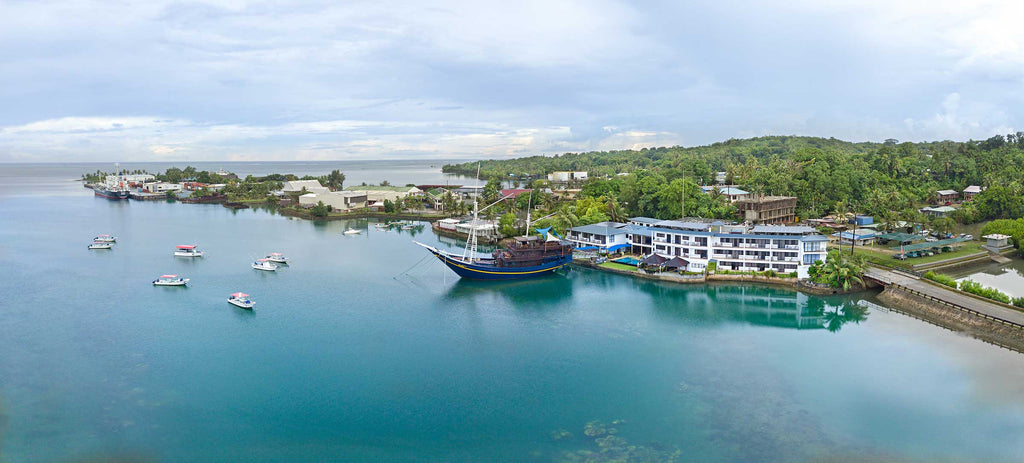
The dive staff at Manta Ray Bay Resort are experts at manta ray encounters. They even work with the Manta Trust and Manta Conservation Coalition to maintain a Manta Ray ID Database. Mantas can be identified by the unique markings on their undersides.
Temperatures range from 75-86ºF (23-30ºC) through out the year with heavy rains possible at any time. The water temperature is a balmy 82-84ºF (27-28ºC) with a 3mm wetsuit being more than enough to be comfortable on some of the longer dives. There are limited flights into Yap and no mater where you are coming from your best bet is to have the Manta Ray Bay Resort suggest possible routes which they are happy to even book for you. Most itineraries include a stop in Guam and then a flight on United Airlines to Yap.
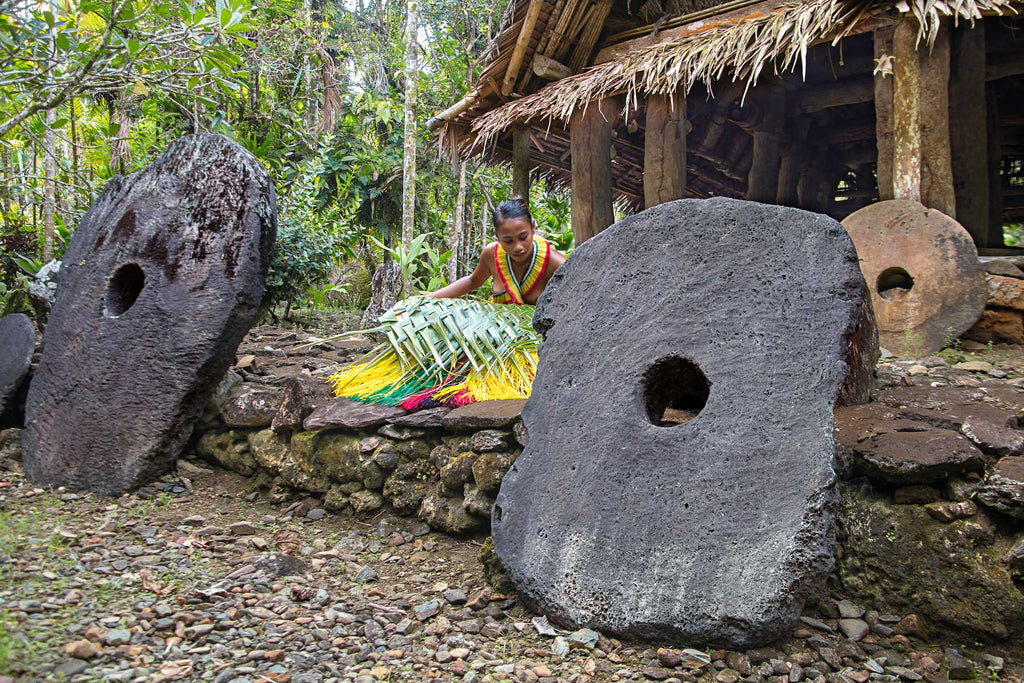
The native people of Yap are known for their oversized stone money, known as Rei, and beautiful traditional dances.
The island of Yap is Micronesia’s epicenter for manta ray diving. These reef mantas, Manta alfredi, have been studied, photographed and identified in an ongoing project by Manta Ray Bay Resort in cooperation with Manta Trust, a Guam based entity that works on conservation through research, awareness and education. MantaTrust.org. Mantas are complex social animals that are spectacular to encounter. They have one of the highest brain to body size ratios with well developed cognitive abilities. The brain of an adult whale shark is only a third the size of a mantas even though they are ten times as large.
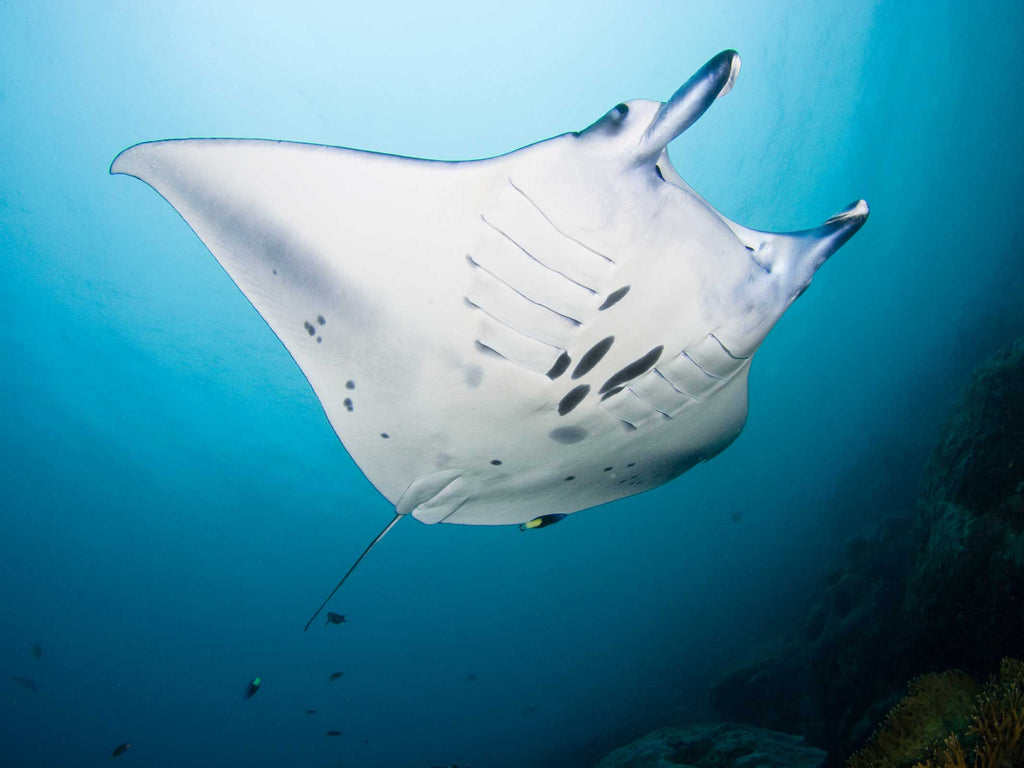
The sheer size of these creatures is breathtaking. A wide angle lens is a must when shooting giant manta rays can have wingspans of 15 feet (44.5 meters).
Photographing Mantas
Go wide. The first choice for a lens when shooting creatures that can be 15 feet (4.5 meters) across is a full frame fisheye. The Canon EF 8-15mm f/4L fisheye zoom is my current favorite, although there are several choices of fixed lens here as well. A wider angle of coverage means that you will be shooting through less water when you fill the frame with your subject. No mater how good the visibility looks there are still particles suspended and drifting by. The shorter the distance between you and the manta means the less of these bits to degrade your image.
While we are talking about getting close, let us look at a few important points when approaching manta rays. Firstly, don’t. Mantas do not like to be chased down by bubble blowing, twin strobe monstrosities. Your best bet in Yap, is have one of the dive guides put you in the right place where you can kneel comfortably without damaging the reef, long before a ray shows up. The mantas will circle a cleaning station to have parasites removed by wrasses and butterflyfish. If there is some current, which is often the case in these channels, the mantas can even line themselves up in the flow and hover in one place for long periods of time to get a thorough going over.
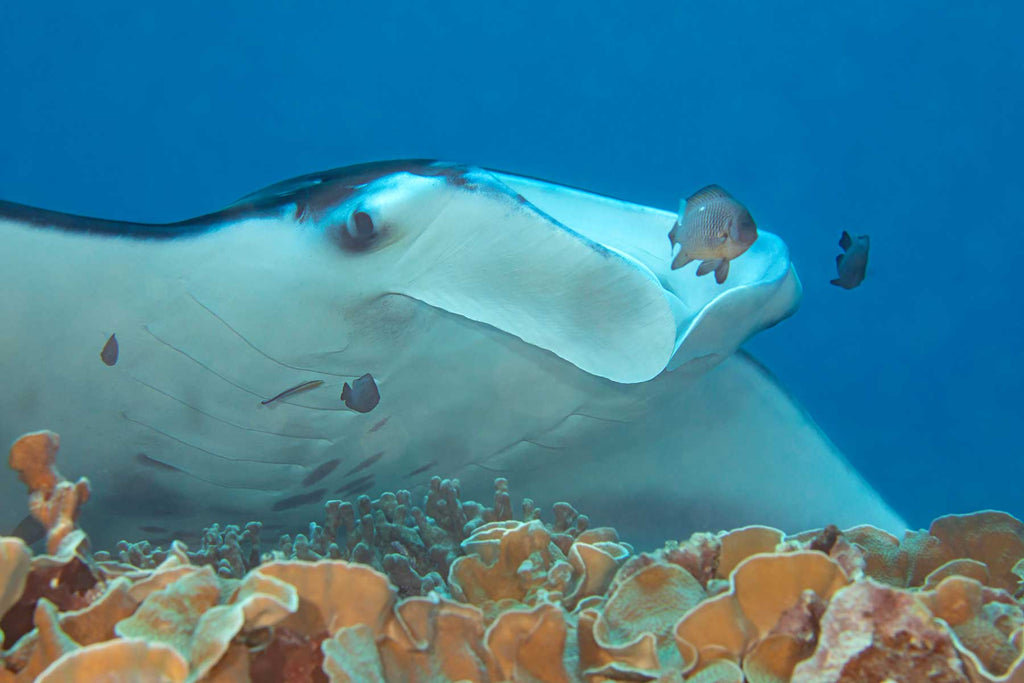
It's best to reduce the amount of water between you and the manta ray to a minimum for the best possible clarity. A zoom lens can help you to frame the manta at a variety of distances as it approaches and swims away.
A wide angle zoom would be my next choice, such as the Canon EF16-35mm f/4L. This allows you to frame the manta when it is still some distance away and then zoom wider as it approaches. This is likely to give you a few more opportunities to pull the trigger. If you are shooting on TTL, which works incredibly well, keep in mind that the further away the manta is, the more your strobes will likely be dumping close to full output. So don’t pull that trigger too fast initially, give them the second or two they need to get back to full power. As the manta gets closer the TTL magic will drop the output to keep the right exposure so all you have to worry about is your composition rather than fiddling with strobe power settings and/or your aperture.

Sharp focus is critical to getting the shot. Back Button Focus (BBF) can help you to track and capture your subject in full, vibrant detail.
Underwater I almost always shoot what is known as Back Button Focus (BBF). For more detail on this check out the article Getting It Sharp: Back Button Focus and Post Processing Worfklow. BBF separates lens focusing and shutter release, which is preset to happen all together on just the shutter button. Through the custom menu I turn off the shutter release to autofocus and use the AF-ON button on the upper right corner of the back of the body on my Canon 5D mark 4 exclusively to achieve this. Finally I select the AI SERVO mode for focusing and turn on all the focus points in the camera.
While holding the housing underwater I can then focus with my thumb and at the same time pull the shutter release with my trigger finger. This two-step process takes a little getting used to, but it is now second nature for me. In the case of a wide-angle moving subject such as manta rays, I will hold the AF-ON button/lever down, allowing the camera to constantly update the focus while I am able to shoot frame after frame at the time of my choosing.

Mantas will generally be passing overhead during your encounters. Resist the urge to reach out and touch them as they glide by.
Yap’s mantas are more used to being with divers than the majority of manta encounters in the rest of the world. With a little patience you are likely to have one of them pass directly overhead. If this occurs, you will want to stay put and don’t move. They can come very close but touching is something you definitely do not want to do. Mantas are covered in a protective mucus coating that you don’t want to rub off. As well they generally don’t take to physical contact and so this may end what could have been a much longer encounter. In this case you will return to a boat load of unhappy divers who will likely express their feelings for your poor judgment at the cleaning station.

Mantas have been observed all over Yap dive sites. You never know when you'll run into one, so stay on the lookout during every dive.
On one occasion I spent a long dive with a group of divers, mostly from Europe. We had several mantas for well over 45 minutes and for most of the dive I distinctly heard mumbled talking and even some higher pitched singing sounds. Once back on the boat several of the divers confessed to making these noises through their regulators and claimed that, beyond a doubt, the mantas would react in a positive way to these sounds. I count myself as being fairly open minded, but I had my doubts. I do confess to trying this on several occasions. The jury is still out, but hey, it can’t hurt and certainly does not seem to drive them away.
Most pleasing manta images are from a low perspective so that you can get some blue water towards the surface as a background. Before the manta gets to you, take a shot or two to nail down your settings for pleasing blue water and adjust as needed. You will likely have chunks of time between manta encounters so use this to review your images and make sure you are getting what you want. If you find yourself with a manta and a different scenario, I suggest you get creative and pull the trigger anyway. A shot from directly above a manta showing the surrounding reef can be an interesting perspective with the right light.
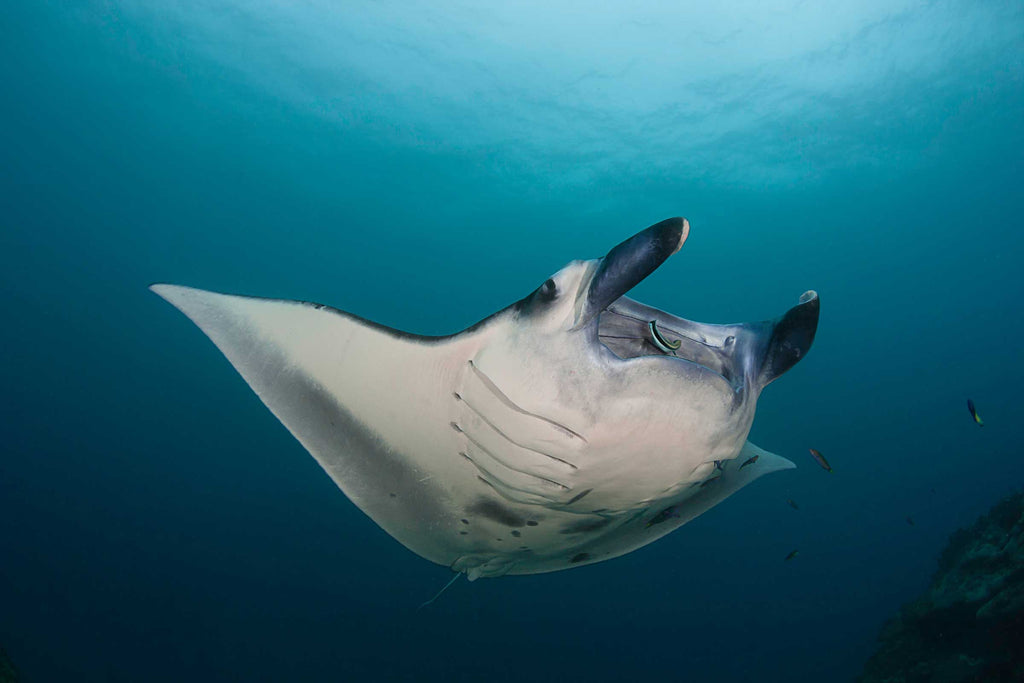
A small wrasse tags along acting like a mobile cleaning station for the giant manta ray.
If you have a manta that is repeatedly passing overhead, the next thing to try is shooting a silhouette. Turn your strobes off and bump your shutter speed up. You don’t have to worry about your sync speed now and you want a fast shutter to get clean edges on your silhouette. If it is a blue sky day the faster speed will help to capture the light rays that are around the bright ball glowing through the surface. It a perfect scenario the manta will line up to eclipse the actual sun, which tends to burn out anyway, and be surrounded by bright beams of sunlight.
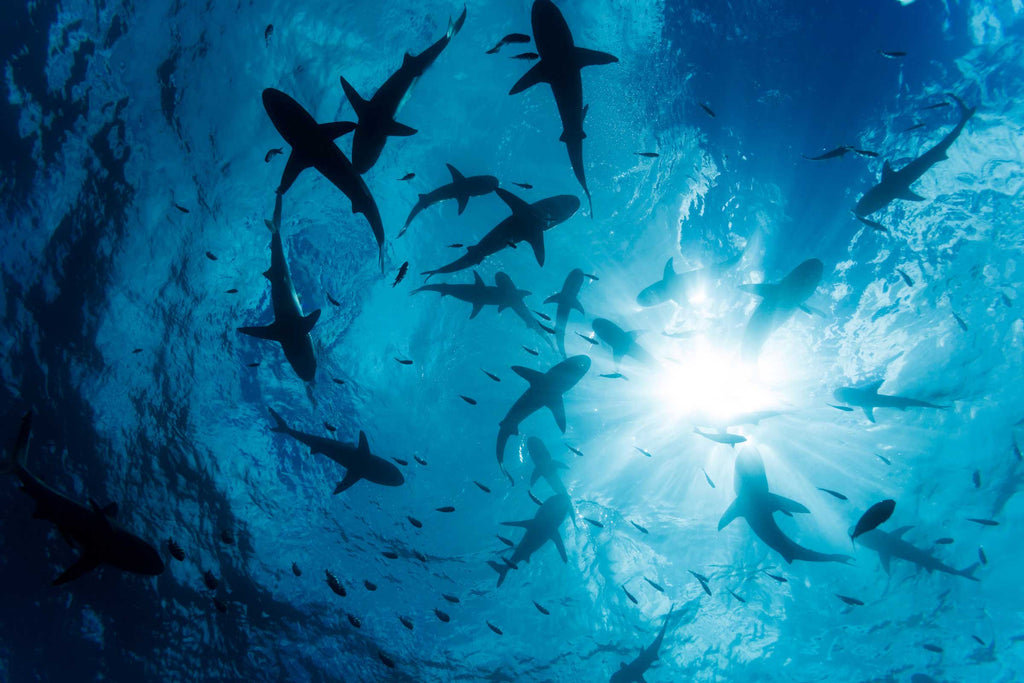
Turn off your strobes and use a fast shutter to shoot the mantas, or any larger objects, as silhouettes. Ideally your subject will swim right over the sun ball for maximal light rays and a cool eclipsing effect.
The two channels that hold the cleaning stations also abound with a huge variety of life worth some time photographing. Schools of jacks, colorful soft coral, angelfish, clownfish and anemones, the list goes on and on. I once was lining up on a shrimp in mushroom coral with a macro lens and a dark shadow moved overhead. When the same manta made a third pass, I thought, what the hell, and started shooting. This has happened with a 50mm macro and even a 100mm macro lens and I’m pleased to report that, given exceptional visibility, you can pull off some memorable photographs that have a different look to them.
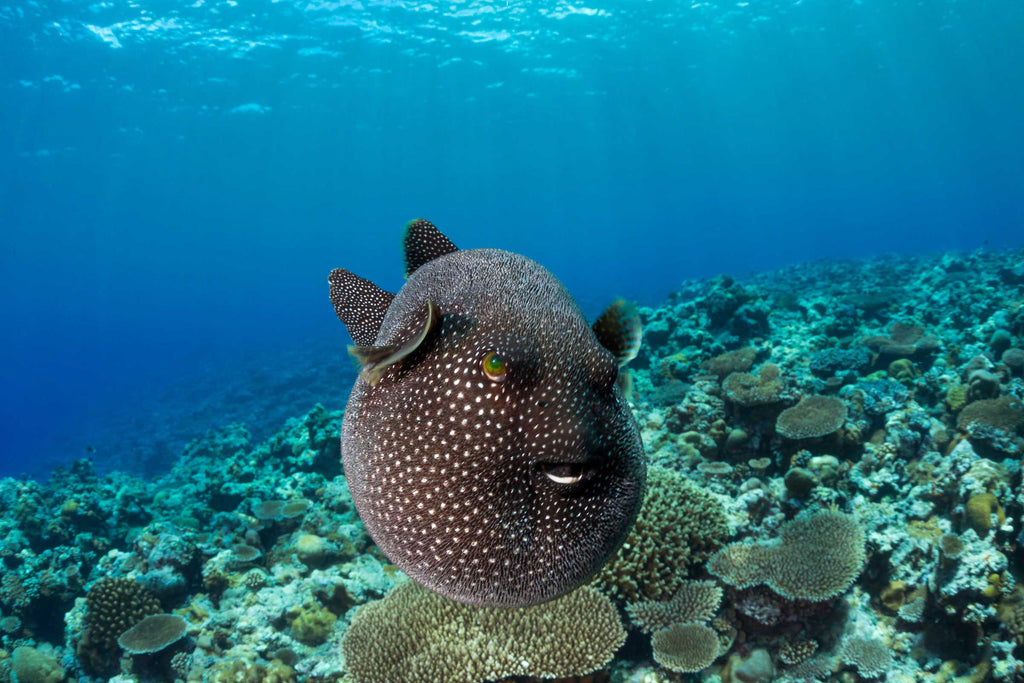
Of course there's a lot more to see around the reefs of Yap, like this puffer cruising over the hard corals. Yap is also known for its twilight mandarinfish dive.
Mantas have been observed all over Yaps dive sites, so you never know when you might run into one. The only other predictable scenario is when they are observed feeding at the surface. This takes place most often at the mouth of the channels, timed with the right tidal exchange and can involve many animals if the conditions are ideal. Depending on the current you may be able to snorkel and photograph them feeding. You will begin up current from the activity and drift down to them. Slip into the water quietly without a big splash which can alarm the mantas. You will want to maneuver to one side to avoid resembling a bowling ball scoring a strike. This could end an amazing encounter. It is best to turn into the current and lightly kick to slow yourself down. If you can maintain a parallel position with the mantas you can get some great shots. Because you are at the surface you can leave the strobes on the boat (remember to bring a plug to seal the cord connection) and shoot available light. It can be difficult to swim and hold your camera steady, so bump up your shutter speed to ensure a sharp shot. As they become used to your presence you will be able to inch your way closer to the activity.

If you keep your eyes peeled, mantas can frequently be spotted feeding at the surface of the water.
Many of these techniques can also be used in other big animal encounters. Another dive site pioneered and frequented by Manta Ray Bay Resort is named Vertigo. Several species of sharks found here have been attracted with a small volume of bait that is contained in a PVC cylinder and eventually given to the sharks towards the end of the dive. It is just one of many great photographic opportunities to be found around this fascinating island jewel of Micronesia.
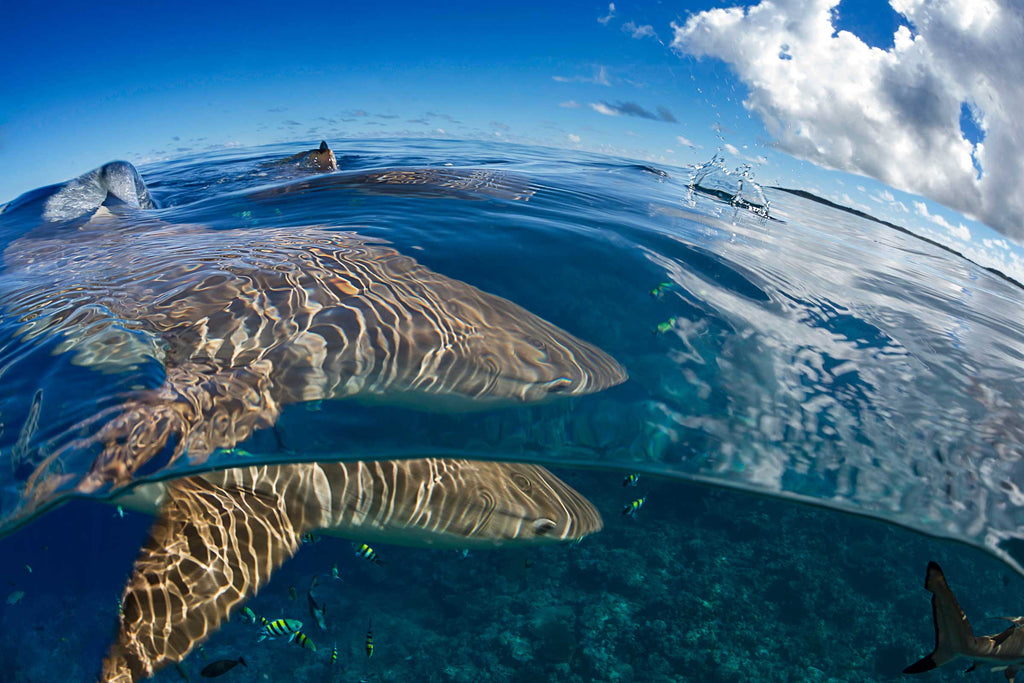
The baited dive experience at the site Vertigo attracts a number of species of sharks and their entourage.
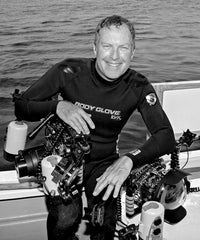 Ambassador David Fleetham left his hometown of Vancouver, Canada, for Maui in 1986 and never looked back. He earned his USCG Captain's license while working in various dive charter businesses, shooting, and submitting his photos to magazines and businesses. One of the most prolific underwater photographers of his time, David now has galleries and agents in over 50 countries that reproduce his images thousands of times each year. Read more...
Ambassador David Fleetham left his hometown of Vancouver, Canada, for Maui in 1986 and never looked back. He earned his USCG Captain's license while working in various dive charter businesses, shooting, and submitting his photos to magazines and businesses. One of the most prolific underwater photographers of his time, David now has galleries and agents in over 50 countries that reproduce his images thousands of times each year. Read more...
Additional Reading
Event | Manta Fest 2020 | August 30 - September 12, 2020
An Insiders Guide to Diving Wakatobi Resort Indonesia
Behind the Shot: Swirling Mobulas in Southern Baja Mexico
Getting it Sharp: Back Button Focus and Post Processing Workflow
Shark Photography Underwater Camera Settings











